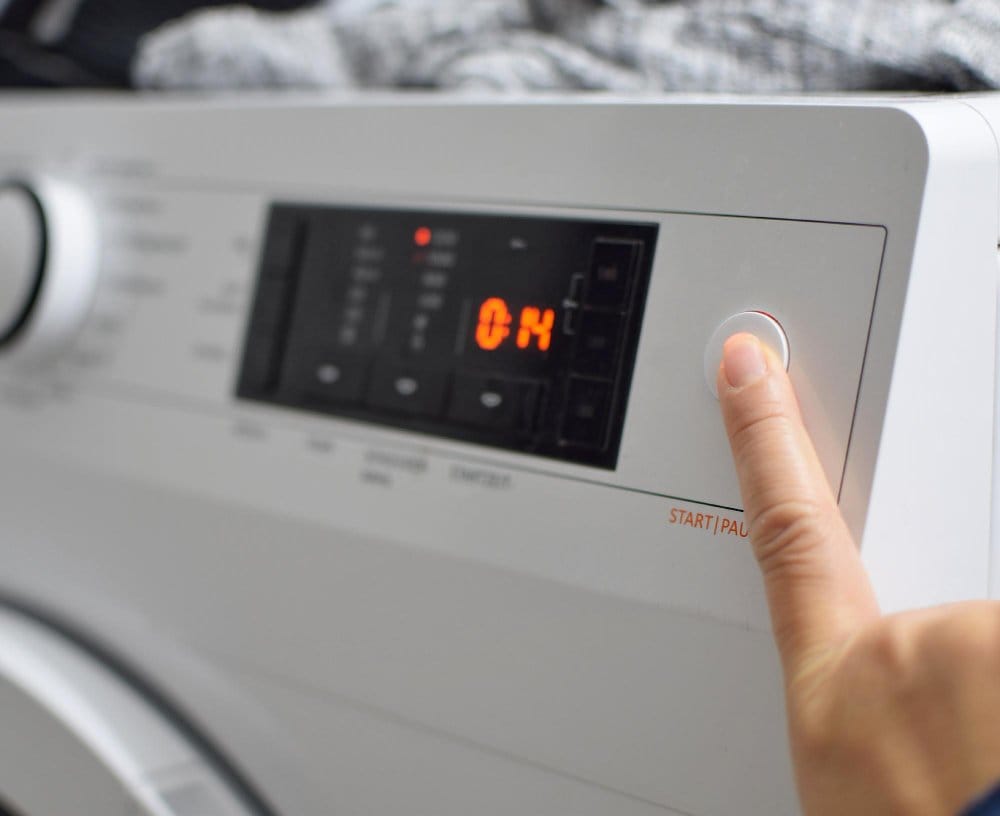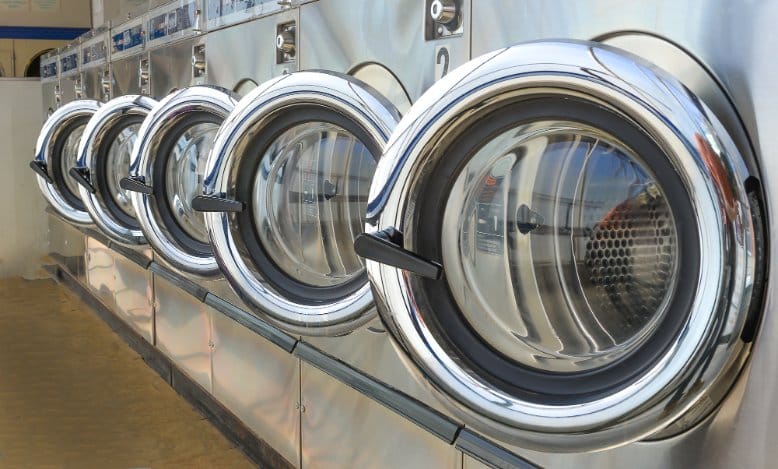A Parent’s Guide to Safe Drying Techniques for Delicate Baby Garments
When it comes to laundry, sometimes I wonder what I can safely toss in the dryer, especially when it comes to my baby’s clothes. Most baby clothes can go in the dryer if I use a low heat setting and always check the care labels. It’s common to worry about shrinking or damaging delicate fabrics, so I want to make sure I’m doing things the right way.
I know some baby items, like blankets or special outfits, need extra attention or different washing steps. There are a few simple ways I prepare my baby’s clothes for the dryer that really make a difference.
Table of Contents
Key Takeaways
- Most baby clothes are safe in the dryer on low heat.
- Checking care labels helps avoid shrinking or damage.
- Special items may need unique care steps.
Can You Put Baby Clothes in the Dryer?
Many baby clothes can go in the dryer, but not every item is suitable for machine drying. I pay attention to fabric types, safety tips, and manufacturer guidelines to keep baby clothes in the best condition.
Dryer Safety Guidelines
I always make safety my first concern when using a dryer for baby clothes. High heat can shrink fabrics, fade colors, or weaken fibers. To avoid these issues, I use the lowest heat or a delicate setting.
Useful Tips:
- I clean the lint filter before each load for better air flow and safety.
- I don’t overload the dryer because crowded loads dry unevenly.
- I avoid dryer sheets when drying baby clothes. Chemicals in dryer sheets can irritate a baby’s skin and reduce fire-retardant properties on sleepwear.
- I check laundry as it dries, removing items that are dry to prevent over-drying and damage.
If any clothing has snaps, zippers, or decorations, I turn items inside out. This protects delicate parts and keeps baby clothes looking new.
Fabric Types and Dryer Compatibility
Baby clothes are made with cotton, polyester blends, organic fabrics, or specialty materials. These fabrics react differently in the dryer.
- Cotton: Most cotton baby clothes can go in a tumble dryer. However, I choose a low heat to reduce shrinking and wear.
- Polyester and blends: These are often more durable and less likely to shrink, but I still use a gentle cycle.
- Wool and specialty fabrics: I avoid the dryer for these, as high heat can cause shrinking or damage. I typically lay these items flat to dry.
If I have mixed fabric materials in one load, I separate them by label instructions to avoid damage.
Manufacturer Instructions
I check each item’s care label before using the dryer. The label shows the safest drying method and heat level.
How I read care labels:
| Symbol | Meaning |
|---|---|
| Square with a circle | Tumble dry allowed |
| Dot in the circle | Number of dots = heat level |
| X over the circle | Do not tumble dry |
If the care label says “do not tumble dry,” I air-dry these clothes. For instructions that allow tumble drying on low, I set my dryer to the lowest heat.
When in doubt, I follow the manufacturer’s directions to keep baby clothes safe and long-lasting.
Potential Risks of Drying Baby Clothes
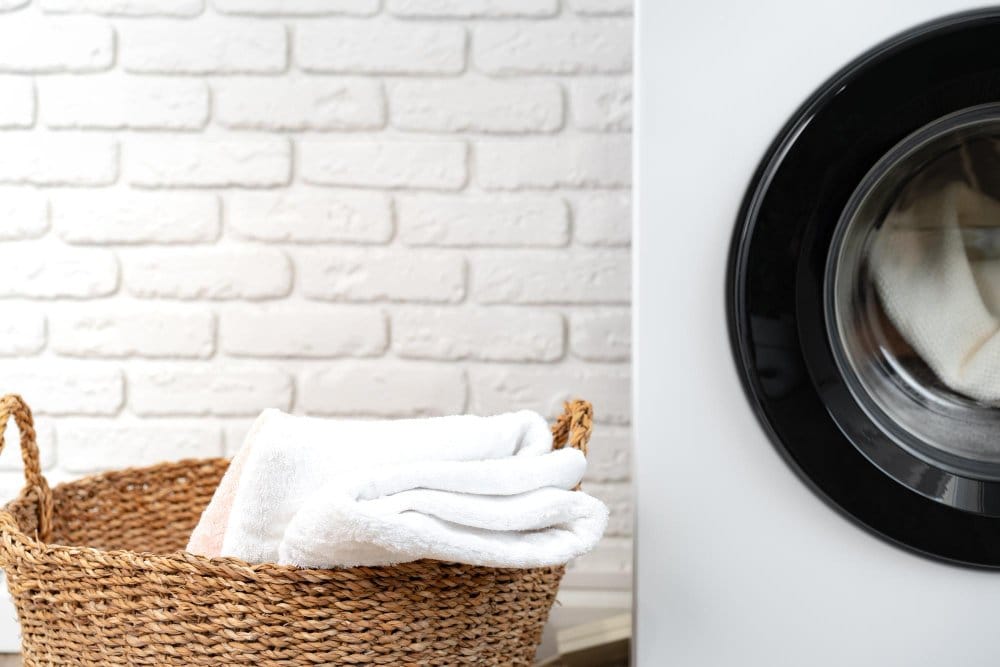
Drying baby clothes in a dryer can cause several problems such as shrinkage, skin irritation, and early wear. I always weigh these potential risks before deciding how to dry each item.
Shrinkage Concerns
Shrinkage happens when heat from the dryer causes the fibers in baby clothes to tighten. Clothes made with cotton or fabrics with elastic are especially at risk.
I have noticed that drying on high heat settings can make onesies, socks, and pants fit smaller after just one wash. Even using medium heat can still cause slow but steady shrinkage over time. This can lead to wasting money if I need to buy replacements sooner than planned.
To help prevent shrinkage:
- I set my dryer to a low heat or delicate setting.
- I check clothing labels for heating instructions.
- When possible, I let clothes air dry to keep them at their original size.
Sensitive Skin Reactions
Babies have sensitive skin that can become irritated by dryer heat or laundry products. High heat can leave clothing rough, which might scratch or bother my baby’s skin.
Dryer sheets and some detergents leave behind chemicals and scents that may stick to baby clothes. I avoid fabric softeners and dryer sheets, as they can trigger rashes or allergic reactions.
To protect my baby’s skin:
- I use mild, fragrance-free detergents.
- I avoid dryer sheets and fabric softeners.
- I check the feel of each garment after drying to make sure nothing feels rough or stiff.
Damage to Fasteners and Snaps
Most baby clothes have fasteners like snaps, zippers, or Velcro. Drying them in a machine can be hard on these parts.
The repeated tumbling and heat can bend, crack, or break snaps and zippers. Sometimes, metal parts get hot and weaken, making them less secure. Velcro can also collect lint or lose its stickiness after too many trips through the dryer.
To reduce damage:
- I close all zippers and snaps before drying.
- I use laundry bags for items with delicate fasteners.
- I inspect fasteners after drying to catch issues early.
Best Practices for Drying Baby Clothes
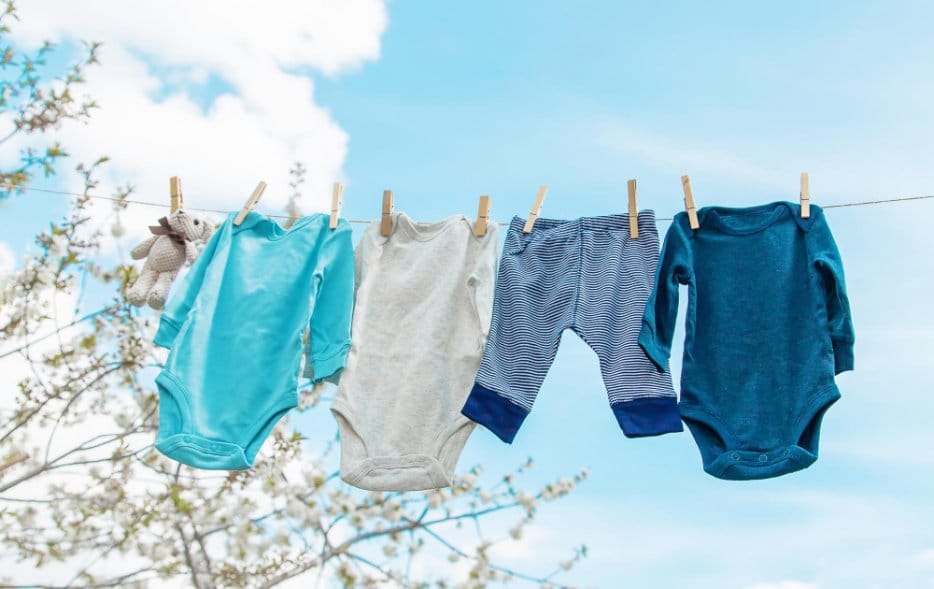
Drying baby clothes correctly helps keep fabrics safe and comfortable for your baby. I focus on gentle heat, proper air circulation, and using the right equipment to prevent damage and preserve softness.
Choosing Dryer Settings
When I use a tumble dryer for baby clothes, I always set it to low heat or select a “tumble dry low” cycle. High heat can shrink the fabric or ruin elastic parts, making the clothes lose their fit and stretch.
I never overload the dryer, as this lets air move freely so clothes dry evenly. I also check care labels before drying because some baby clothes are not meant for the dryer.
To avoid static, I skip fabric softeners and dryer sheets. They can leave residue behind, which can irritate a baby’s skin. I often use wool dryer balls instead. They keep clothes soft without adding scent or chemicals.
Using a Drying Rack
I often use a drying rack for delicate or small baby clothes. A rack works well for items that might stretch or lose shape in the dryer, like sweaters or hats. I lay heavier clothes flat and hang lighter items over the rungs.
Placing the drying rack in a room with airflow helps clothes dry faster. I make sure to space each item apart for good air circulation. This prevents damp spots and keeps odors away.
I also wipe the drying rack with a damp cloth before each use to keep it clean and avoid dust or dirt touching baby clothes. Collapsible racks are easy to store if I have limited space at home.
Air Drying Versus Tumble Drying
Air drying is the gentlest option for most baby clothes, especially for those made of cotton or with printed designs. It prevents shrinking and helps keep colors bright. Using an indoor rack or an outdoor clothesline are both effective ways to air dry.
Tumble drying is much faster and convenient, especially when I need clothes ready in a hurry. With proper settings and care, the tumble dryer can be safe for most baby items. I just avoid high heat and always check for special washing or drying instructions on the label.
I choose air drying for delicate or stain-treated items because heat from the dryer can set stains and make them harder to remove. Combining both methods ensures clothes are clean, soft, and last longer.
Preparing Baby Clothes for the Dryer
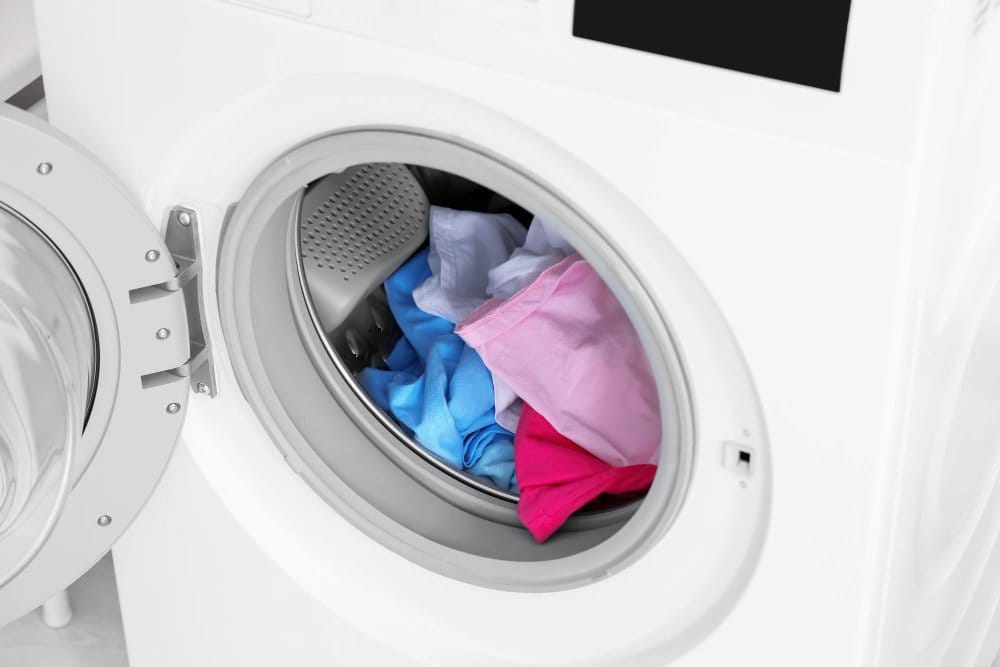
When getting baby clothes ready for the dryer, I pay close attention to washing methods, the type of detergent I use, and what chemicals I keep out of the laundry process. These details help protect the clothes and my baby’s skin.
Washing Baby Clothes Before Drying
I always check the care labels on each piece of clothing. Many baby clothes can go in the dryer, but some fabrics need special care to avoid shrinking or damage. For example, 100% cotton outfits might shrink if washed or dried with high heat.
Before drying, I wash baby clothes separately from the rest of the laundry. This step helps prevent residue from adult clothes or towels from ending up on sensitive baby items. I sort lights and darks to stop colors from bleeding.
If clothes have stains, I treat them with a small amount of gentle stain remover. I rinse each item properly to make sure no soap or stain remover is left behind. After washing, I shake out each piece to remove excess water and smooth out wrinkles before placing them in the dryer.
Selecting the Right Laundry Detergent
I choose detergents made for babies or labeled as free of dyes and fragrances. These types are much gentler on my baby’s skin and less likely to cause irritation or allergic reactions. I avoid strong industrial cleaners or powders that can leave residue.
Some detergents include enzymes that break down stains. While enzymes can be helpful for removing formula or food marks, I pick products without too many additives. It’s important to use the right amount of detergent—too much can leave residue, and too little might not clean well.
I also look for products that are easy to rinse off and do not leave a film on clothing. Effective rinsing keeps baby clothes soft and safe for skin contact.
Avoiding Fabric Conditioners and Harsh Chemicals
I do not use fabric conditioners on baby clothes. Softeners can leave a coating on the fabric, which may lower the material’s absorbency and cause skin irritation. Some conditioners include strong fragrances or chemicals that aren’t safe for babies.
Bleach and other harsh cleaners should also be avoided. They can damage the fibers and irritate a baby’s sensitive skin. Instead, I stick to gentle laundry routines with mild detergents and skip extra chemicals.
If I want to freshen clothes, I may use a second rinse cycle to help remove any leftover soap, making the clothes safer when they come in contact with my baby’s skin.
Special Considerations for Newborn Clothing and Accessories
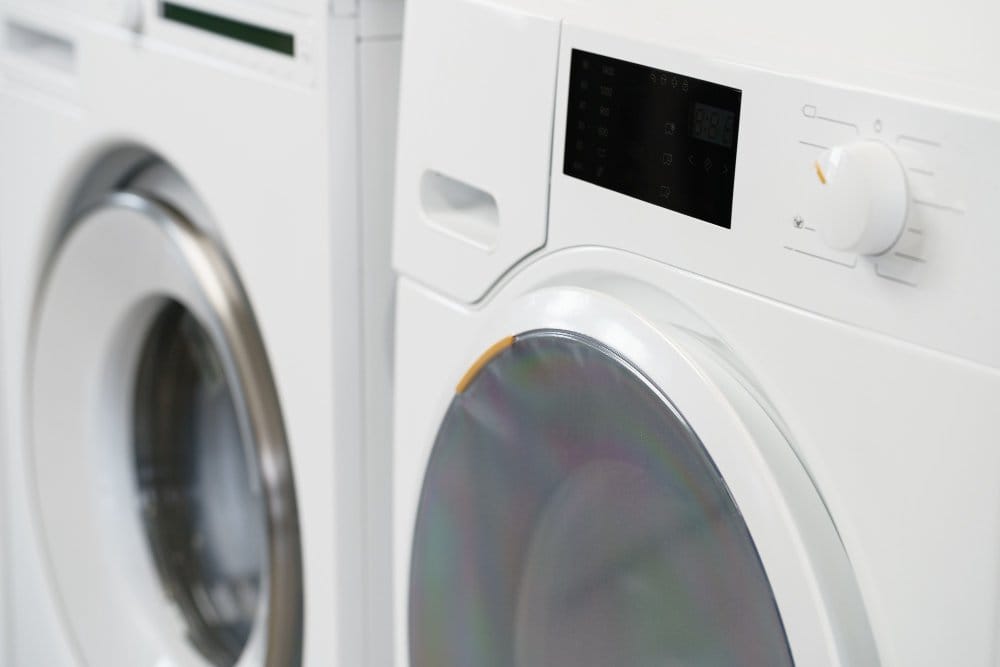
Newborn clothes and accessories need extra care because babies have sensitive skin and their clothing is often made from soft, delicate materials. Paying attention to fabric type, heat settings, and item construction helps protect both the clothes and the baby’s skin.
Drying Newborn Clothes Safely
I always check the care label before putting any newborn clothing in the dryer. Most newborn clothes can go in the dryer on a low heat or gentle cycle to help prevent shrinking and to keep fabrics soft.
High heat can damage tiny snaps, elastic around waists and wrists, and any printed designs. To keep their shape and size, I never overload the dryer and often use dryer balls to reduce static without harsh chemicals.
When drying fine materials, like cotton or bamboo, I avoid over-drying to prevent fabrics from becoming scratchy. If the clothing is very delicate or has lace or embroidery, I sometimes lay it flat to dry, which helps keep it looking new. This also helps prevent added wear on seams and trims.
Handling Diapers, Onesies, and Delicate Items
For cloth diapers, drying on low heat is usually safe, but I avoid using dryer sheets since they can reduce absorbency. Some diaper brands recommend line drying to keep waterproof layers working well. I follow the manufacturer’s guidelines to avoid damaging the item.
Onesies, with their snaps, tend to shrink if they get too hot. I turn them inside out and fasten any snaps before drying. For sets with soft trim or special prints, I use a mesh laundry bag to protect them from snags.
I sort delicates like hats and mittens separately. This helps prevent small pieces from getting lost or tangled. If an item feels especially fragile, I prefer to hang it up or lay it flat instead of using the dryer. This careful handling keeps clothing comfortable and lasting longer for each wear.
Caring for Baby Blankets and Sheets
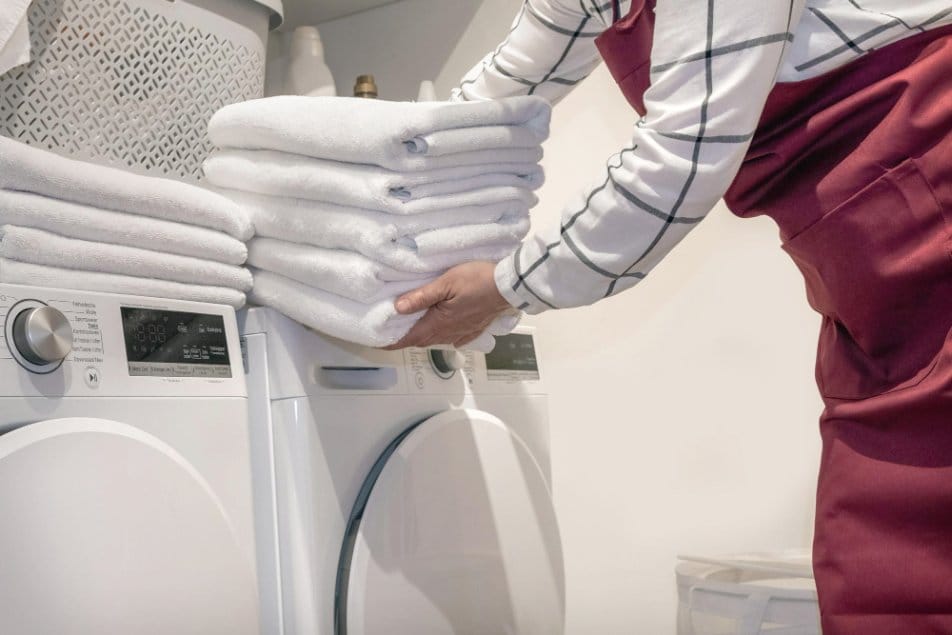
I pay special attention to how I dry baby blankets and crib sheets. Using the wrong heat setting or drying method can cause shrinkage, wear, or cause fabrics to lose softness. My approach is simple but effective to help baby bedding last longer.
Drying Blankets Without Damage
When I dry baby blankets, I use a low heat setting on the dryer. High heat can shrink cotton or make soft fibers harsh. If possible, I add wool dryer balls to keep blankets soft and reduce drying time.
Here’s a quick guide I follow for drying baby blankets:
- Check the care label for specific instructions.
- Use low or delicate heat on the dryer.
- Remove promptly so blankets don’t over-dry.
- Skip fabric softeners as they can leave residue.
- Shake out blankets after drying to keep them fluffy.
If the weather allows, I sometimes air dry blankets to help keep their shape and softness. I avoid hanging them in direct sunlight for too long, since colors can fade.
Properly Drying Crib Sheets
For crib sheets, I use a gentle or low heat cycle. Sheets can shrink or wrinkle easily, especially if left in the dryer after the cycle ends. I always remove them as soon as they are dry, which helps prevent deep wrinkles and shrinking.
Here are steps I use for drying crib sheets:
- Wash sheets before first use to remove any residue.
- Dry on a low heat setting.
- Take them out while slightly damp, and smooth them out or lay flat.
- Avoid overloading the dryer so sheets tumble freely.
Drying sheets this way keeps them soft, helps prevent shrinking, and maintains their fit on the mattress. I avoid dryer sheets because they can make bedding less breathable.
Tips for Stain Removal and Laundry Success
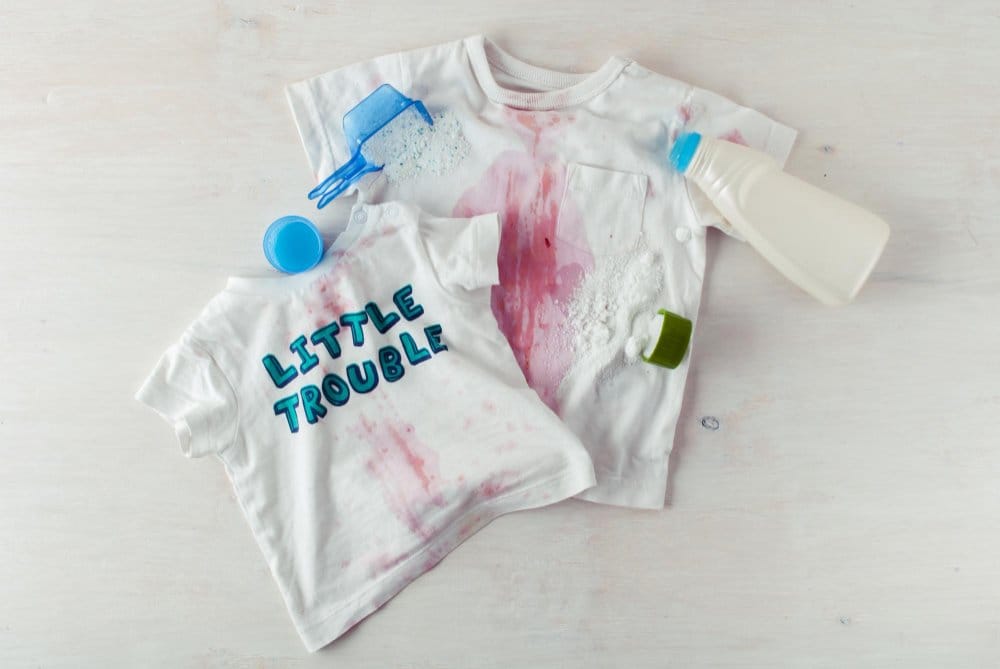
Stains on baby clothes can be tough, but using the right steps makes a big difference. I always focus on quick stain treatment and safe laundry habits to protect the fabric and my baby’s skin.
Effective Stain Removal Methods
I treat new stains as soon as I see them. First, I gently blot the spot with a damp cloth to lift away any extra mess. I avoid rubbing since that can push the stain deeper into the fabric.
For set-in or tough stains, I use an enzyme-based stain remover. I let the product sit on the fabric for about 10-15 minutes before washing. If I don’t have stain remover, I mix a little baby detergent with water, dab it on the stain, and let it soak.
To handle multiple items, I soak them all in a basin with warm water and detergent for at least 30 minutes. Stains like spit-up or food often come out better after soaking.
If any stains remain after washing, I repeat the steps before drying. Heat can make stains harder to remove, so I check clothing before putting it in the dryer.
Laundry Tips for Busy Parents
I sort baby clothes by color and wash temperature. This helps keep whites bright and prevents colors from bleeding. I use mild, baby-friendly detergents to avoid skin irritation.
Skipping fabric softeners and dryer sheets is important. These additives can lower the flame resistance of pajamas and cause buildup on fabrics.
When I machine dry baby clothes, I use a gentle or low-heat setting. High heat can shrink clothes or damage them over time. To avoid wrinkles and extra work, I take baby clothes out of the dryer right after the cycle ends and fold them while warm.
I keep a stain remover pen near my laundry basket. This helps me treat new stains quickly, even if I’m busy. With these steps, my baby’s clothes stay clean, soft, and ready to wear.
Conclusion
Drying baby clothes properly is an important part of maintaining your little one’s wardrobe while ensuring their comfort and safety. As we’ve explored throughout this guide, most baby clothes can indeed go in the dryer when proper precautions are taken.
The key takeaways to remember when drying baby clothes include:
- Always check care labels before drying any baby item
- Use low heat settings to prevent shrinkage and damage to delicate fabrics
- Consider air drying special garments, embellished items, and delicate fabrics
- Skip fabric softeners and dryer sheets to protect your baby’s sensitive skin
- Treat stains before drying, as heat can set them permanently
- Pay attention to fasteners, snaps, and decorative elements that might be damaged in the dryer
Finding the right balance between convenience and proper clothing care will depend on your specific situation. For everyday basics like cotton onesies and simple sleepers, the dryer on a low heat setting offers a practical solution for busy parents. For special outfits, heirloom pieces, or items with delicate embellishments, taking the extra time to air dry may help preserve them for longer.
By following the guidelines in this article, you can keep your baby’s clothes clean, soft, and in good condition while making laundry day a little more manageable. Remember that with a little extra care during the drying process, you can extend the life of your baby’s clothing—which is especially helpful when passing items down to younger siblings or saving special pieces as keepsakes.

